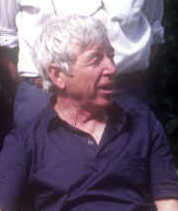Joe Brown (climber)

Joseph Brown, usually Joe Brown, CBE (born 26 September 1930) is an English climber. He is regarded as the outstanding pioneering English rock climber of the 1950s and early 1960s.
Brown established a number of new routes in Snowdonia and the Peak District that were at the leading edge of the hardest grades. He made ascents in the Alps in the 1950s with others and, in 1955, the first ascent of the world's third highest mountain, Kangchenjunga in the Nepalese Himalaya, with George Band. In 1956 he made the first ascent of the west summit of the Muztagh Tower in the Karakoram with Ian McNaught-Davis.
Brown helped create new types of "protection" to improve safety on climbs, creating some of the first "nuts". in 1966 he opened a shop, since expanded to three shops in Snowdonia. He is also remembered for televised rock climbs in the 1960s and was involved in many films.
He has been appointed a Member of the Order of the British Empire (MBE) and in 2011 a Commander of the Order of the British Empire (CBE) in the New Year Honours.
Biography
Born the seventh and last child of a family in Ardwick, Manchester, Lancashire, England.[1] Brown was the first in his family to climb: aged 12, he began exploring from camp sites with his friends. They used discarded clothes lines that were not fit for purpose. Brown was employed by a company called Archies, where he was apprenticed to a plumber and general builder.[2] He became famous for climbing during the 1950s, and was a member of the Valkyrie Climbing Club and founding member of the Rock and Ice climbing club.[3] An early climbing partner was Don Whillans, from the neighbouring city of Salford. They were among the first of a new breed of post-war climbers from working-class backgrounds, in contrast to the upper and middle class professionals who had dominated the sport up to the Second World War.
Brown was enlisted in 1949-50 for 18 months in the Royal Army Ordnance Corps, where he spent his free time climbing with friends. Brown broke his leg in three places in a scrum for the tea urn but was back up and climbing three months later.[2]
He established a number of new routes in Snowdonia and the Peak District that were at the leading edge of the hardest grades. Examples on Dinas Cromlech in the Llanberis Pass include "Cenotaph Corner" (1952, graded E1, with Doug Belshaw) and "Cemetery Gates" (1951, E1, with Don Whillans).[3] As well as creating pioneering routes, he helped create new types of "protection" to improve safety on climbs, and is acknowledged to have created some of the first "nuts" by drilling the thread out of nuts and threading the centre with a sling. So famous was he that the Post Office would often deliver letters simply addressed to "The Human Fly, UK".[citation needed]
Brown's mountaineering achievements in the Alps and Himalayas: he made many ascents in the Alps in the 1950s with Whillans and other members of the Rock and Ice climbing club and, in 1955, the first ascent of the world's third highest mountain, Kangchenjunga in the Nepalese Himalaya, with George Band. In 1956 he made the first ascent of the west summit of the Muztagh Tower in the Karakoram with Ian McNaught-Davis. The other members of the team, John Hartog and Tom Patey, reached the main summit the next day.
Apart from numerous rock climbs in Britain, and mountaineering achievements abroad, Brown is remembered for televised rock climbs in the 1960s, three in Snowdonia, and in 1967, a spectacular new route on the Old Man of Hoy, a Scottish sea stack, with Ian McNaught-Davis and Chris Bonington. Fifteen years later Brown repeated the climb on the Old Man on a television documentary with his second daughter Zoe. Her bubbly personality led her to being chosen as a presenter on the children's TV show Razzamatazz.
Already a Member of the Order of the British Empire (MBE), Brown was appointed Commander of the Order of the British Empire (CBE) in the 2011 New Year Honours for services to rock climbing and mountaineering.[4]

On 17 February 1957 Brown married Valerie Melville Gray.
Throughout his climbing career Brown was involved in films such as Hazard,[5] Upsidedown Wales, Five Days One Summer, in which he and other British climbers assisted with the mountaineering scenes.
His first daughter Helen was born in 1960 followed six years later by Zoe. She later repeated a climb for a TV show.
Brown started to create and improve climbing gear and in 1966 opened a shop,[2] since expanded to three shops in Snowdonia and an online presence, branded in English as "Joe Brown shops" and in Welsh as "Siopau Joe Brown".
Bibliography
- Brown, Joe (1967). The Hard Years. London, UK: Victor Gollancz. ASIN B001PQCRYK. (Original Hardcover)
- Brown, Joe (2001). The Hard Years. Seattle, WA, USA: Mountaineers Books. ISBN 978-0-89886-845-6. (Reprint Edition)
References
- ^ "Joe Brown Biography." /
- ^ a b c "Joe Brown Biography" Joe-Brown.com.
- ^ a b Thompson, Simon (2010). Unjustifiable Risk?. Cicerone. pp. 207–209.
- ^ "No. 59647". The London Gazette (Supplement). 31 December 2010. p. 7.
- ^ "HAZARD (1959) film no: 4570". Yorkshire Film Archive. Retrieved 23 September 2014.



